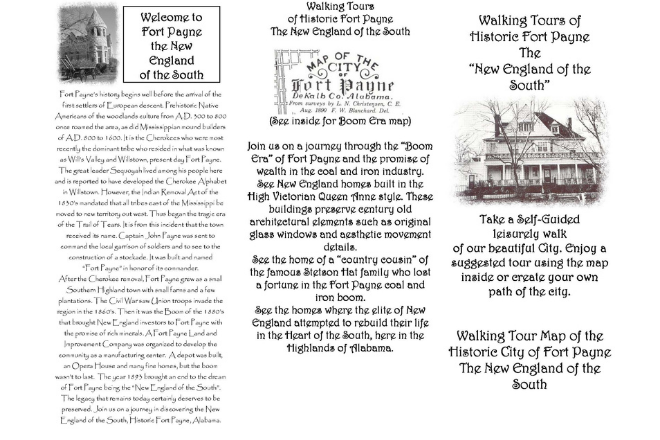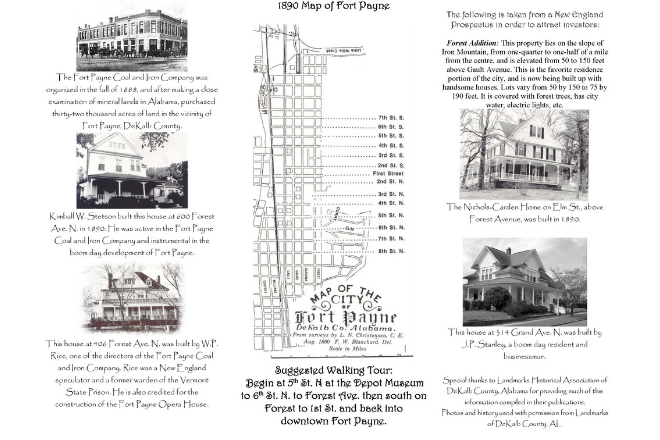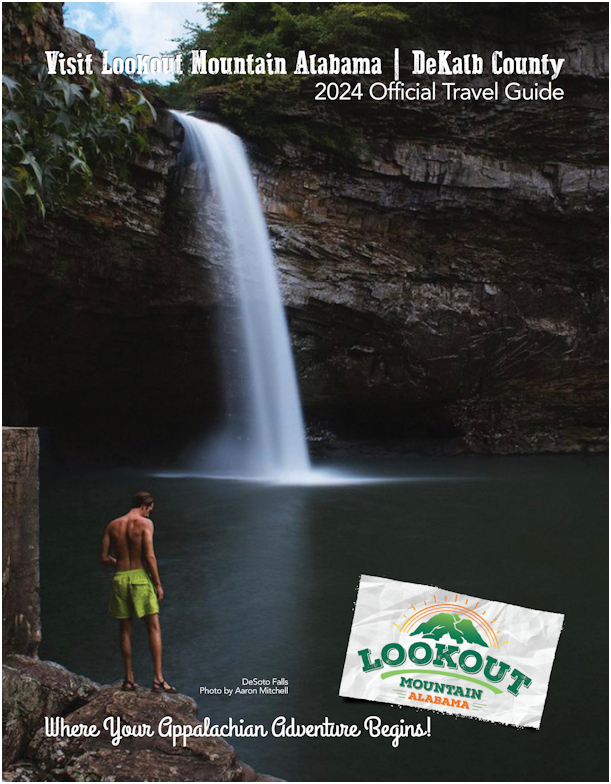Fort Payne City Self-guided Walking Tour
Fort Payne City Self-guided Walking Tour
By Patty Tucker
Photos by Patty Tucker
Located in a linear valley, sandwiched between Lookout and Sand Mountains, is the captivating city of Fort Payne, county seat of DeKalb County, in the far NE corner of Alabama. A city that appears small by some standards but is big on what it has to offer. Fort Payne encapsulates an array of features in one section of the city, showcasing its history and small-town charm while it spreads out, like tentacles on an octopus, and ensnares a wealth of attractions in other areas, such as the Little River Canyon National Preserve and DeSoto State Park, demonstrating the overall size and magnitude of the city on a grander scale.
The city was once known as Willstown and the county as Wills County in the 1700s when the region was inhabited by Cherokee Indians. Their chief was “Red-Head” Will Weber and the valley named after him.
Fort Payne’s history takes us from being the hub of activity as a Cherokee Nation to the creation of an alphabet by Sequoyah, perfected here in then Wills Valley and taught an illiterate nation to read and write, to the Trail of Tears and the forced removal of Indians on the John Benge Trail of Tears route and the construction of a Fort named for the military leader, John Payne, hence the later naming of the city to “Fort Payne”, to becoming a railroad town and a “boom” of construction and modernization at the discovery of coal and iron ore at the base of Lookout Mountain to the bust and the end of the boom and the birth of the hosiery industry where Fort Payne was once touted as the “Sock Capital of the World”.
The history of Fort Payne can easily be seen within a walking distance of one segment of time frame to another. A self-guided walking tour is a pleasurable one, no matter the season and on level terrain, making it easy for most to navigate.
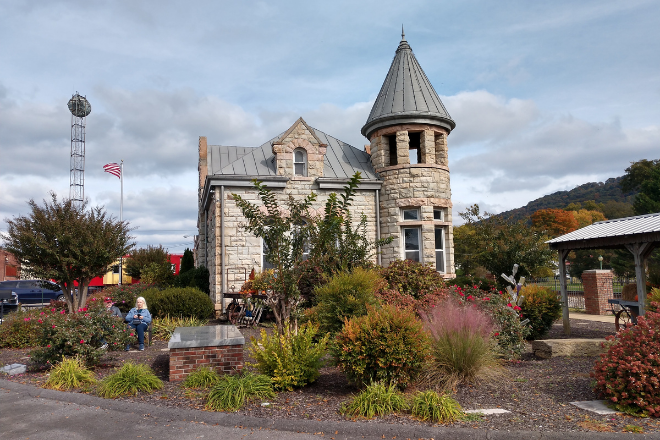
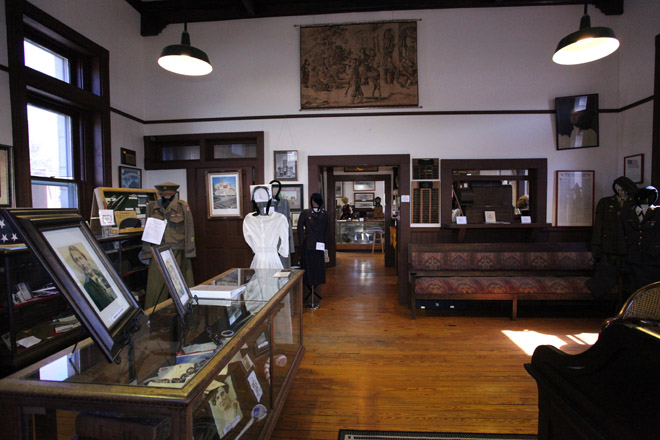
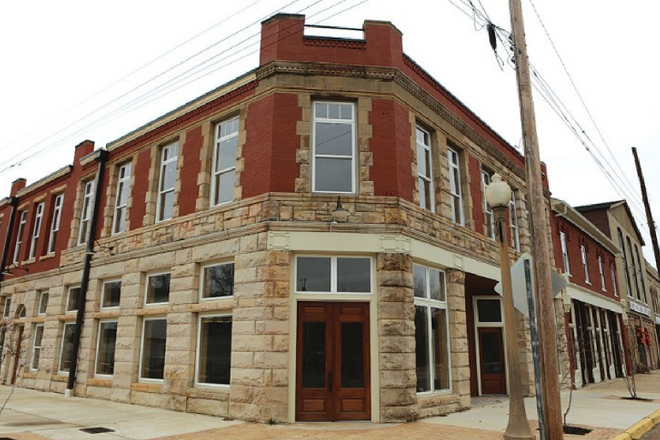
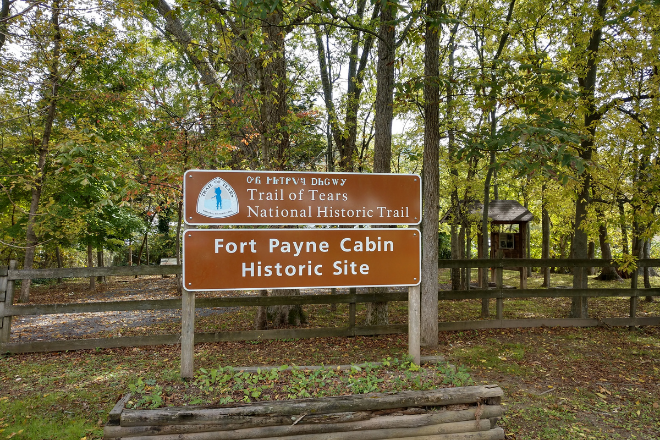

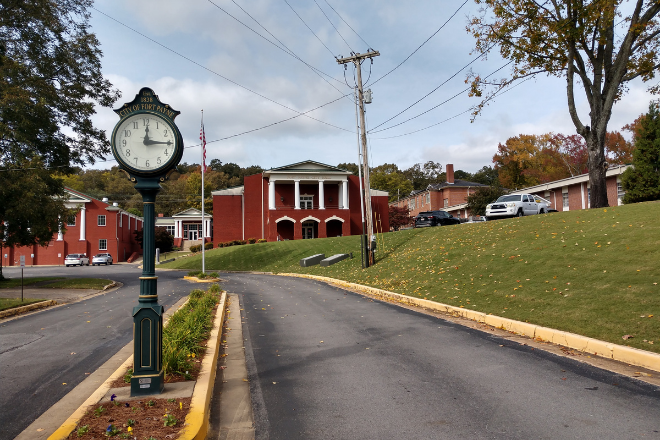

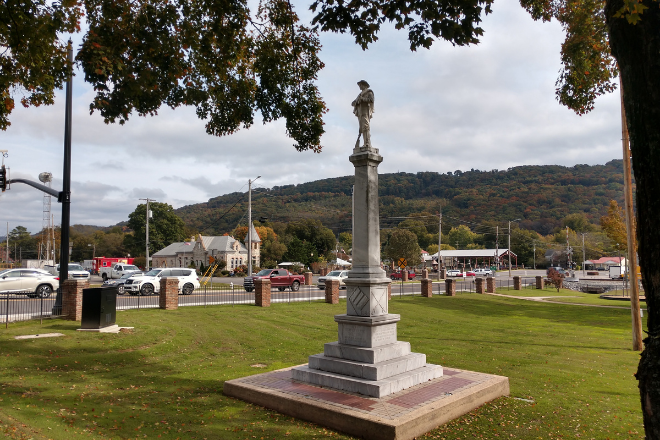

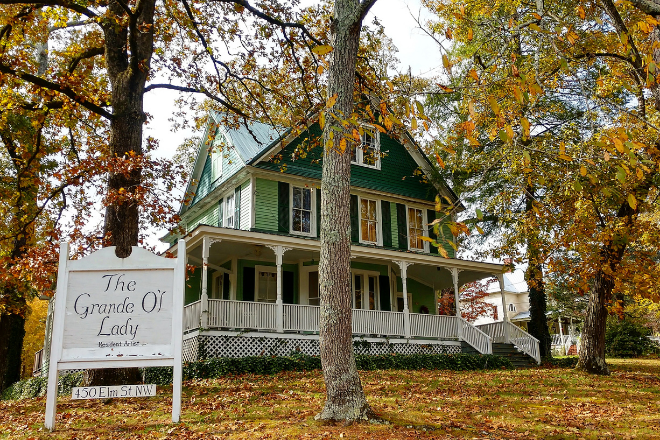
A suggested starting point would be the Fort Payne Depot Museum, with ample parking spaces around the Depot to leave your vehicle as you leisurely stroll through the attractions, streets and shops.
The Depot, located at the corner of 5th Street and Gault Avenue North, was built in 1891, during the city’s Boom period and served to bring wealthy investors from Pennsylvania and other northern states to the newly incorporated Fort Payne at the prospects of rich deposits of Coal and Iron Ore. Those investors built beautiful homes along the northern ridge of Fort Payne on Forest and Alabama Avenues. Homes that still stand today, highlighting the belief of Fort Payne being the “New England of the South” and was going to make the investors wealthy beyond means.
The Depot is built of locally mined pink sandstone and designed in a Richardsonian Romanesque architecture to, again, serve as a promise of wealth to be gained by living and investing in Fort Payne. It houses historical pieces from most every era of Fort Payne’s chronicling including the pre-dated account of the Cherokee Nation. Hand-woven baskets, pottery and other pieces are part of the collection of the Depot’s exhibits. November is Native American Heritage Heritage month, a time to celebrate the rich traditions and contributions of Native peoples and therefore a good time to visit sites in Fort Payne, such as the location of the fort built during the Trail of Tears near 3rd Street and Gault Avenue South, the Willstown Mission Cemetery at 38th Street and Godfrey Avenue North, City Park across from the Depot and of course the curation of artifacts at the Depot Museum.
Walk across the street, Gault Avenue, from the Depot and here you will see the Opera House, the oldest in the state of Alabama still in use today, a train museum, the restored Coal and Iron building used for special events, and the hosiery museum.
Take a stroll up 5th Street from the Opera House and you will cross Grand Avenue to Alabama Avenue to Forest Avenue where hearty Oak, Maple and Dogwood trees line the streets for a plethora of color during the seasons of Spring, Summer and Fall. Winter brings seasonal lights and decorations, trimming out the city as a winter wonderland. Turn to the south on Forest Avenue for a sidewalk wandering among the homes built during the era of the great Boom in Fort Payne. The streets count down as you stroll along bringing you to the old Forest Avenue School that, after a major renovation, now houses the offices of Fort Payne City Hall and auditorium.
Drop down the streets from City Hall, crossing each of the avenues back to Gault Avenue into the hub of downtown Fort Payne. Here you will notice each of the buildings is trimmed in lights, illuminating the city at night as the lights bounce off one structure to the next creating a necklace chain from downtown to 5th Street to the pendant of the festive lights, the Chandelier Tree located between the Fort Payne Opera House and the Depot Museum.
Warm up with a cup of coffee, apple cider, white hot chocolate or other favorite beverage, and a hot sandwich at the popular The Spot Coffee Shop at the corner of 1st and Gault Avenue. The Spot is located in one of the historic buildings lending an industrial feel yet cozy place to rejuvenate from your city jaunt. Continue on Gault Avenue, going north to return to the Depot Museum. This takes you from one shop to another offering antiques, farmhouse finds, collectibles, shoes and clothing, fresh popped popcorn, and so much more! Walk through City Park where, at the corner of 4th Street and Gault Avenue North is life size statues of the Boys in the Band, Alabama and plaques detailing their many awards acquired during their long career in the music industry, putting Fort Payne on the map internationally. Also in the park is a historic marker describing Sequoyah’s visit to Will’s Valley and the finalizing of his syllabary and teachings.
The City Park and adjacent Alabama Walking Park is beautiful year-round with the lush shades of green in the Spring and Summer, a blanket of yellow with the leaves of the Gingko trees in Autumn and a storybook setting as they are both transformed in Winter for the season of Christmas. The parks are enjoyed for the activities of walking, exercising, picnicking, annual festivals and concerts, and a children’s playground and summertime Splash Park.
The five-block city walk is the culmination of Fort Payne’s history from start to current with a clear vision that Fort Payne continues to move forward.
Even though the “Boom” panned out, one can easily say that Fort Payne’s wealth was never to be tied up in a piece of coal and iron ore, but in the heart and soul of the people who call this place home. So you can say that Fort Payne is rich indeed, with a vein running far deeper than any coal or iron ore ever thought of going. Come and experience the generous charm, warmth and hospitality of the city of lights and walk its streets of gold.
